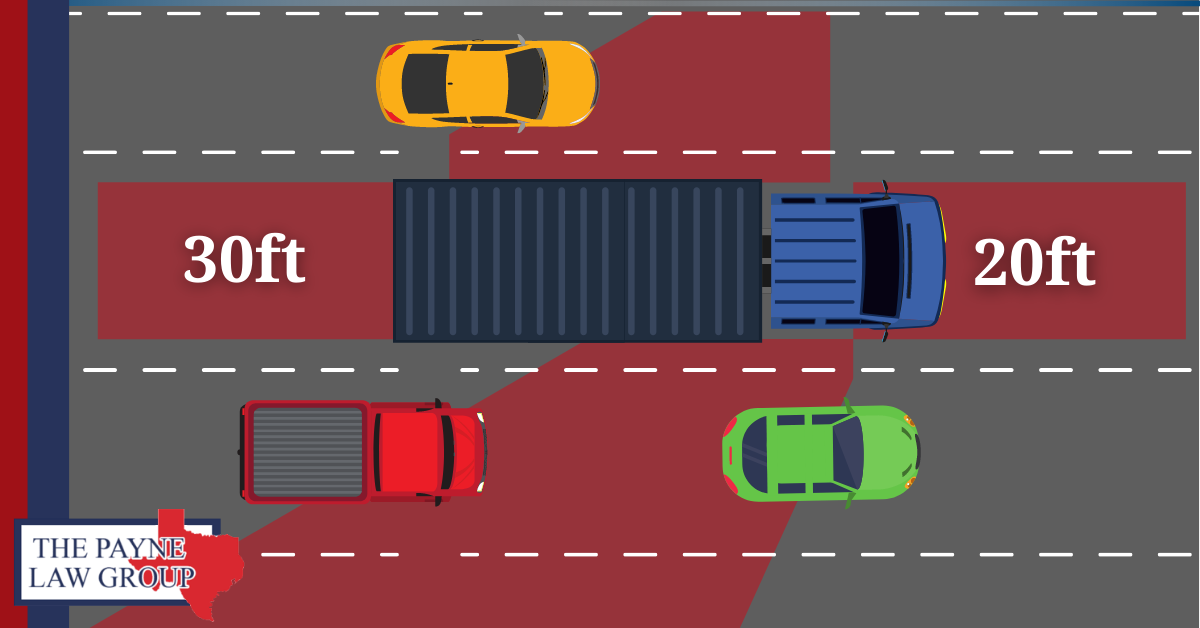There are many causes of trucking crashes, but one stands out above all the others. It has nothing to do with negligent maintenance or bad weather. More often than not, highway truck accidents are caused by something completely preventable--poor driver education. To better understand this problem, let’s take a look at the top cause of trucking accidents and how to prevent them.
What Is the Top Cause?
The majority of two-vehicle truck crashes in the US are caused by poor passing and merging techniques. Many drivers treat large trucks like any other vehicle and will swerve around them, pass them on the right, or tailgate them and wonder why the truck isn’t going faster.
This means that cars may get into a truck accident because they’re following too close and don’t expect the truck to brake. They may linger in a truck’s blind spots, or they try to pass a truck on the right and don’t realize that the truck driver can’t see them.
Most common, however, is when a driver passes a truck, merges into their lane, and then hits the brakes. In this situation, the truck driver may not be able to see the smaller car, and if they do, they may not have enough road to brake safely.
These crashes caused by poor passing and merging techniques are largely preventable, but many drivers of smaller vehicles don’t understand a truck’s physical limitations or their “no-zone.”
What Is The No-Zone?

The no-zone is another term for a large truck’s blindspots. The no-zone isn’t an area of low visibility; it’s an area of zero visibility. To get a better idea of how this works and when a truck driver can see you, take a look at the graphic below.
From this, we can see that truck drivers cannot see anything to their immediate front or rear. The truck’s long hood, combined with its height, prevents drivers from seeing the first 20ft in front of their vehicle. If a driver merges too close to a truck and slows down, the truck driver may not know they need to hit the brakes.
The same goes for the truck’s backed. If someone is tailgating a truck and pulls out to pass them, they could move from one no-zone to another. If the truck driver isn’t focused, they may not see the other car when they start to change lanes.
Some trucks have a sign on their trailer stating, “If you can’t see my mirrors, I can’t see you.” This is only partially true. The sign should say, “If you can’t see me, I can’t see you.” That’s because a truck’s mirrors are curved and angled to look far down the road.
Even if you can see the side-view mirrors, the no-zone prevents a truck driver from seeing anything in the two lanes to their right and anything that might be to their immediate left. Generally, if you can see the truck driver in their mirror, they can see you.
How Can We Prevent Truck Accidents?
Now that we have a better understanding of the no-zone, we can prevent truck accidents caused by poor passing and merging. Here are a few tips to help you stay safe next time you’re driving around a large truck.
Fall Back
Before attempting to pass a truck, make sure you’re at least 3-5 car lengths behind them. Ideally, you should be far enough behind them that you can see their mirrors before you leave your lane. Doing this will help the truck driver to see you as soon as you change lanes.
Pass Promptly
Once you decide to pass a truck, you should do so quickly. The longer you linger next to a truck, the more likely you will get into a crash as the truck driver could lose sight of you or need to quickly change lanes.
Additionally, it’s crucial that you only pass trucks on the left, even on a two-lane road. Remember that truck drivers cannot see anything to their immediate right. If you drive next to a truck on the right, the trucker may try to try to merge back into the slow lane, not realizing you’re in their no-zone. At the same time, you may be unable to see their turn signals if you’re driving alongside them.
Pull Ahead
Once you pass the truck, you need to remember their no-zone. If you merge too quickly, the truck driver won’t see you. Instead of merging back in your lane immediately, you should leave a few extra car lengths, just as you did before starting the pass. As a general rule, if you can see the entire truck in your mirrors, it’s probably safe to merge.
If you or someone you love suffered serious injuries or even wrongful death in a trucking accident, you need a law firm that meets your needs. If you’d like to schedule a free consultation with an experienced Bryan truck accident lawyer from The Payne Law Group, don’t hesitate to contact our firm at (979) 300-7406 or send us an email.




.jpg)
.jpg)